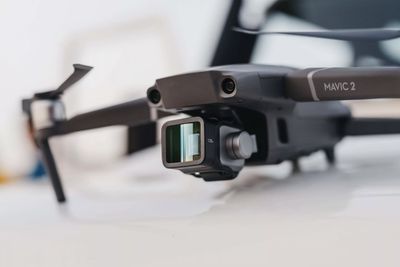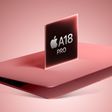Moment has announced its first accessory for drones called the Moment Air, which launches today on Kickstarter. The new accessory is an anamorphic lens for consumer drones, which can be attached to devices like the DJI Mavic 2 Pro and Mavic 2 Zoom.
Moment said that the Moment Air ($299.99; $199 on Kickstarter) delivers cinematic footage thanks to a proprietary design that minimizes lateral chromatic aberration while using a unique set of coatings, which delivers a horizontal flare associated with vintage anamorphics.

Because of this, the Moment Air can show off unique flares in different conditions, including sunsets, to make footage stand out. The lens has a 2.40:1 Cinemascope aspect ratio for video and an anti-reflection lens coating.
Moment Air includes a unique counterweight system that ensures the accessory is locked and balanced around the drone's camera. Additionally, Moment said that the accessory is light enough to ensure the drone can fly uninterrupted.
There is no standard for how to attach and balance a lens on a drone, so we made one. Introducing our Lock and Balance Mounting System. It’s a two part design with a lens on one side and a counterweight on the other. The two parts clamp together over the drone’s camera, creating a secure lock that doesn’t impede the gimbal.
There are a few other drone accessories announced by Moment today, including the new Airlight Droner Filters ($119.99; $99 on Kickstarter). These filters enhance drone footage with cinematic glass that provide smooth, color neutral images, without adding unnecessary weight to the drone.

Lastly, Moment is selling the Ultra Thin Photo Case ($29.99; $25 on Kickstarter), which is thin enough to fit within a drone controller, gimbal, or tripod, and is compatible with the iPhone XR, XS, and XS Max.
These accessories are on Kickstarter as of today, with special early bird prices for those who back the project before the public launch. Moment said that the accessories will ship in November.
























Top Rated Comments
1. Anamorphic flares. AKA JJ Abrams flares that are a horizontal streak, rather than a circular curtain flare. They are pretty and you can avoid flares over the whole image and instead have it along the bottom or top depending on angle and composition.
2. Anamorphic Bokeh. Bokeh is the out-of-focus shape that appears on severely de-focused points of specular light. Think a strand of Christmas bulbs out of focus. On a standard spherical lenses, these resemble a circle, more or less. On an anamorphic lens, they are oblong, or elliptical. () vs O. This can be "magical" in look or style.
3. Cinemascope ratio. This aspect ratio is significantly wider than 16x9. It is the aspect ratio of choice for many hollywood larger-than-life films and was initially popularized in the 70s. Many films finish in this aspect ratio even if they did not shoot anamorphic, effectively cropping their image. Put another way, it has a strong Cinematic Aesthetic. It says, "We're watching a movie, not a TV show or web series."
4. Large-format feel. This is a little harder to describe, but basically an Anamorphic lens "doubles" the width of sensor or film gate, so a 35mm gate becomes a 70mm in terms of horizontal resolution. This is an arguable contention, but the result is that you end up with an image that feels as though you captured a larger format image. Its most apparent at middle range lenses (25-45mm) where you can frame for a Close-Up, but you really get a medium due to the wide format. An easier way to say it is that you see more of the world around the subject, without having to back away or use a wider lens. Hard to put a finger on, but I think its the best quality of anamorphic lenses. (IMHO)
5. Because an anamorphic lens is effectively doubling the width of your sensor, its a way to get to a higher-resolution capture if your camera is limited. On a 3.2k sensor, the Anamorphic de-squeeze puts you at 6.4k horizontal resolution. This is not as sharp as a 6k sensor capturing with a spherical lens, but technically you are capturing a "6k" image at reduced horizontal sharpness. The difference is negligible to the human eye.